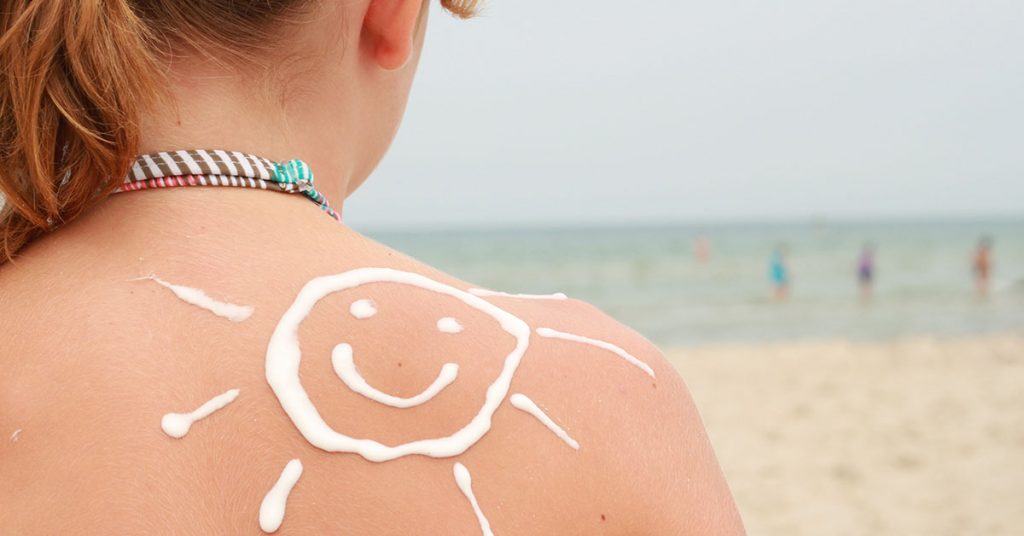During the summer months, kids like to spend a lot of their time outside in the sun. Even with all the current information on how harmful sun damage can be, many tweens, teens, and emerging adults will be hung up on getting a summer tan. They want to sit outside and get golden brown, but you want to keep them (and their skin) healthy and safe. So you might be wondering if there’s a compromise. Is safe tanning possible?
Is There Such a Thing as Safe Tanning?
While getting some vitamin D from the sun each day can be beneficial, too much time will damage skin and could have serious consequences down the line. You’ve probably already heard that the sun can damage your skin even if you don’t get a sunburn. Any prolonged exposure to the sun can cause damage to the DNA of skin cells. This damage can lead to melanoma.
Indoor Tanning is Not Safe Tanning
It’s also important that your teen avoid tanning salons that use UVA and UVB lights in tanning beds. Tanning with artificial light is not safe tanning. In fact, the UV rays from the lights in indoor tanning beds may be stronger than those from the sun. According to the American Academy of Dermatology (AAD), even one indoor tanning session can increase your risk of melanoma by 20 percent.
Given all the above information, there’s no completely healthy way to get a tan. So unfortunately 100% safe tanning does not really exist. That said, outdoor activities at the pool or beach will probably lead to them getting some sun and they may get a bit of a tan if they wear sunscreen. If your teen insists on spending a lot of time outdoors soaking up the sun have them follow the sun safety guidelines we’ve in the section at the end of this page.
Thoughts about Fake Tanning
If teens and young adults still want to get a tan, there are many products available that can give them a tan without sun exposure. While there are professional sunless tanning booths, it’s not advisable to visit these booths during the COVID-19 pandemic. There are bronzing products that can be applied at home but one must be aware that these products contain chemicals about which there is not much safety data. If your teen does use a sunless tanning product, they still need to use additional sun protection when they go outside, even if the product says it contains UV protection.
Staying Safe in the Sun
When they’re going out in the sun, kids and teens should follow the following guidelines:
1. Wear Sunscreen & Reapply
Choose a sunscreen with an SPF of 30 or higher if you’re outdoors for more than 20 minutes. It needs to be water-resistant and protect against both UVA and UVB rays. Reapply sunscreen regularly according to the directions. You should also reapply after swimming or sweating a lot.
2. Cover Up
When doing outdoor activities such as hiking or boating, try covering your skin up with lightweight clothing. There is even clothing available with SPF ratings. And ALWAYS wear sunglasses with UV protection to prevent sun damage to your eyes.
3. Find Shade
When you’re at the beach, pool, or park for a long time, find a shady spot to hang out in. You should still wear sunscreen, but staying out of direct sunlight can reduce your risk of skin damage.
4. Limit Your Time In the Sun
Pay attention to how long you’re outdoors and limit it to a couple of hours (or less) at a time. You also need to be mindful of the time so you know when it’s time to reapply sunscreen. And pay attention to the time of day you are outside. According to the American Cancer Society, UV rays are strongest between 10 am and 4 pm.
5. Avoid Burning
While it’s true you don’t need to get burned for skin damage to occur, sunburn is a bad sign. Not only is it painful, but it is also linked to an even higher risk of melanoma. Follow the above rules and you should be able to steer clear of a burn.
Consult A Pediatrician
The team at Carithers Pediatric Group is here to provide comprehensive care for your children at all stages of life. During this time, the safety of your family and our team members is of the utmost importance. Please read the Carithers Coronavirus Emergency Action Plan to stay up-to-date on our policies. If you have questions or want to make an appointment, call our Riverside office at (904) 387-6200 or our Southside office at (904) 997-0023.



